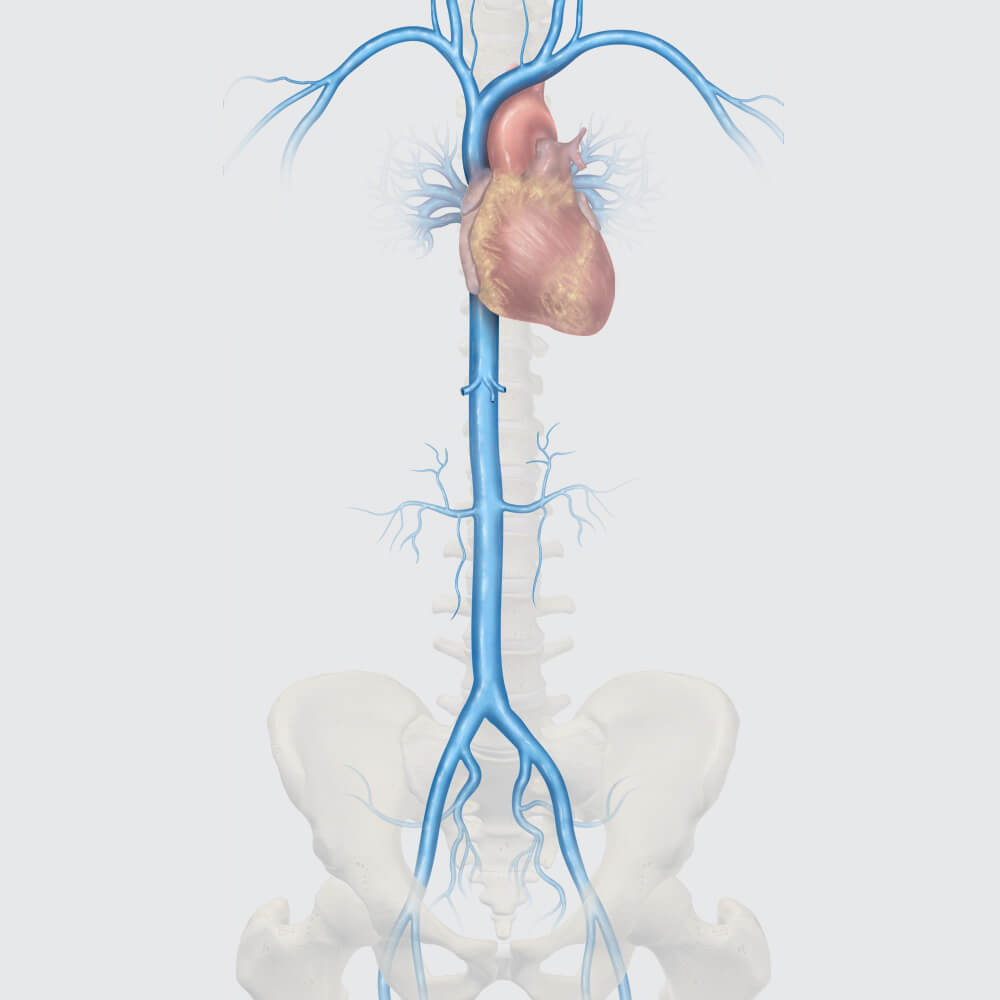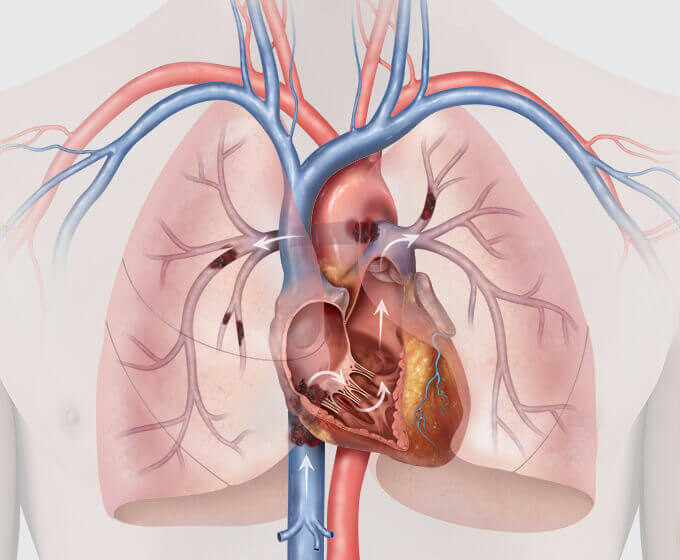The common venous outflow pathway for the lower extremities includes the iliofemoral veins. Obstruction within these veins (i.e., iliofemoral venous outflow obstruction) is most commonly associated with inadequate recanalization of a previous deep venous thrombosis (DVT) or external compression on the veins (e.g., May-Thurner syndrome). Limited outflow from the lower extremities leads to venous hypertension and secondary muscle pump dysfunction,1 which contributes to the progression of chronic venous disease (CVD).
Minimize the consequences of deep venous obstruction and post-thrombotic syndrome
Stenting of the iliofemoral segment allows restoration of blood flow, reducing venous hypertension.

A potential acute presentation of deep venous disease is pulmonary embolism (PE).
Deep vein thrombosis (DVT) and pulmonary embolism (PE) affect 300,000–600,000 individuals in the US annually.2
Prevent life-threatening pulmonary embolism:
For patients that are non-therapeutic and/or contraindicated to anticoagulants, IVC filters are the only alternative vs. a 30% mortality rate with no treatment.2
